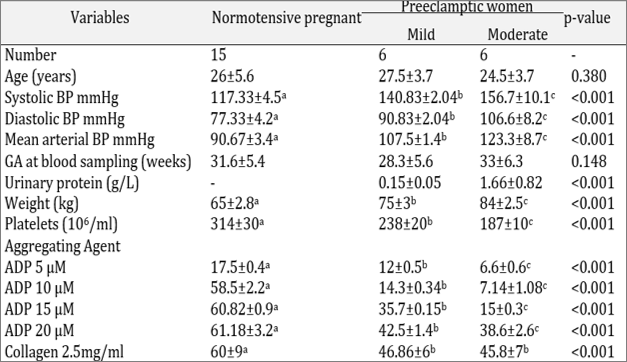Abstract
This study was conducted to investigate the role of platelets count and behavior in the pathogenesis of mild and moderate preeclampsia (PE). Also, the effects of the specific treatment regimen in both cases of preeclampsia investigated. In mild PE only nifedipine had significantly higher platelet count compared to those without treatment, while in moderate PE both verapamil and nifedipine had significantly higher platelet count compared to those without treatment. Concerning platelet response to ADP; in mild PE all drugs show an increase in response compared to those without treatment, a similar finding reported in moderate. While platelet response to collagen, in mild PE both diazepam and verapamil show increased response compared to those without treatment, in moderate PE methyldopa and verapamil show increased response compared to those without treatment. In conclusion, platelets may be involved in the pathogenesis of preeclampsia. Nifedipine and verapamil produced effective enhancement of ex vivo platelets aggregation-induced by ADP or collagen and may evolve as antiplatelet agents that able to prevent the in vivo activation of platelets and exhaustion cycle, an action which could explain the observed effectiveness of calcium channel blockers for the prevention and treatment of preeclampsia other than diazepam or alpha-methyldopa used in this study.
Full text article
Authors

This work is licensed under a Creative Commons Attribution-NonCommercial-NoDerivatives 4.0 International License.

